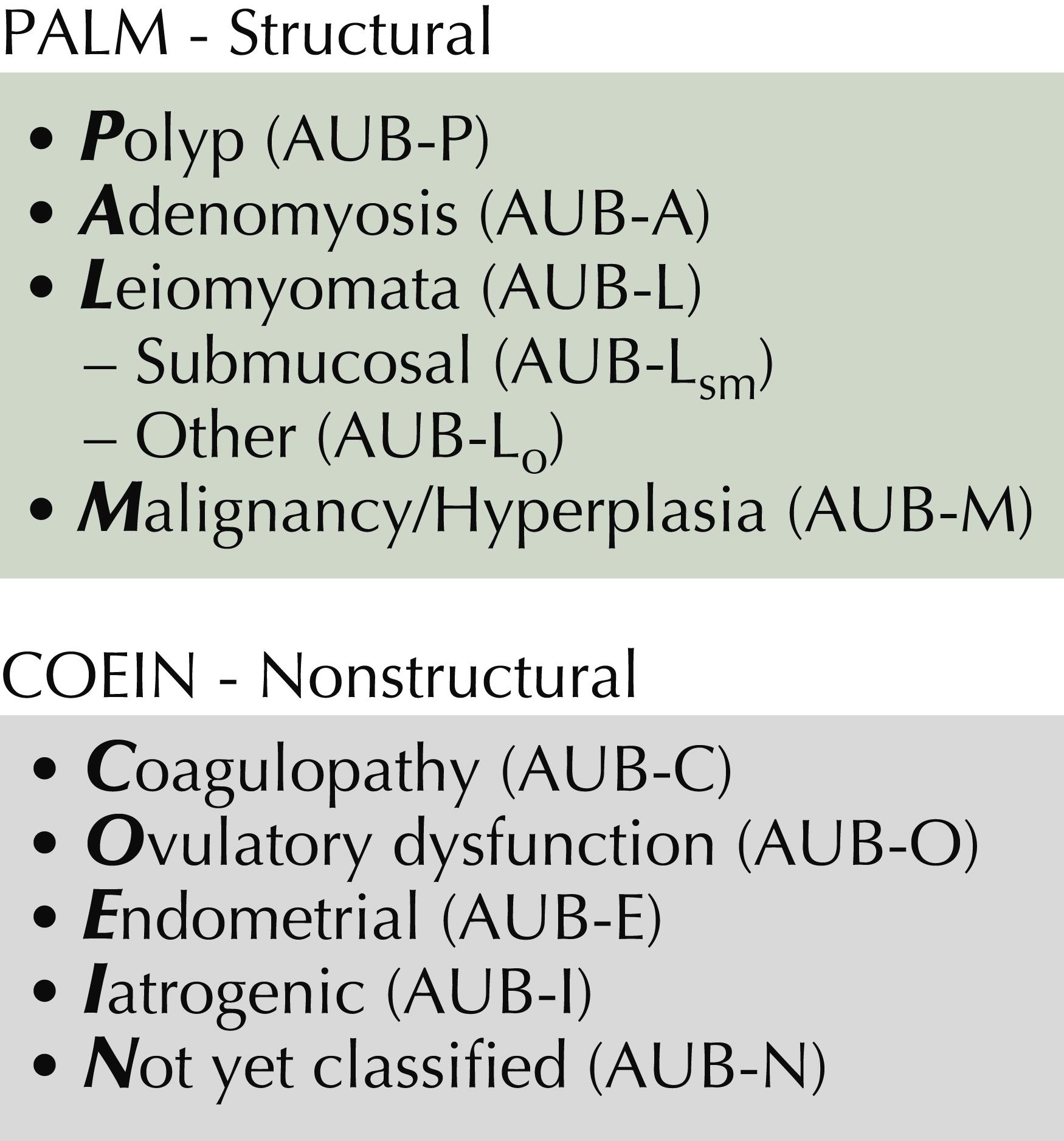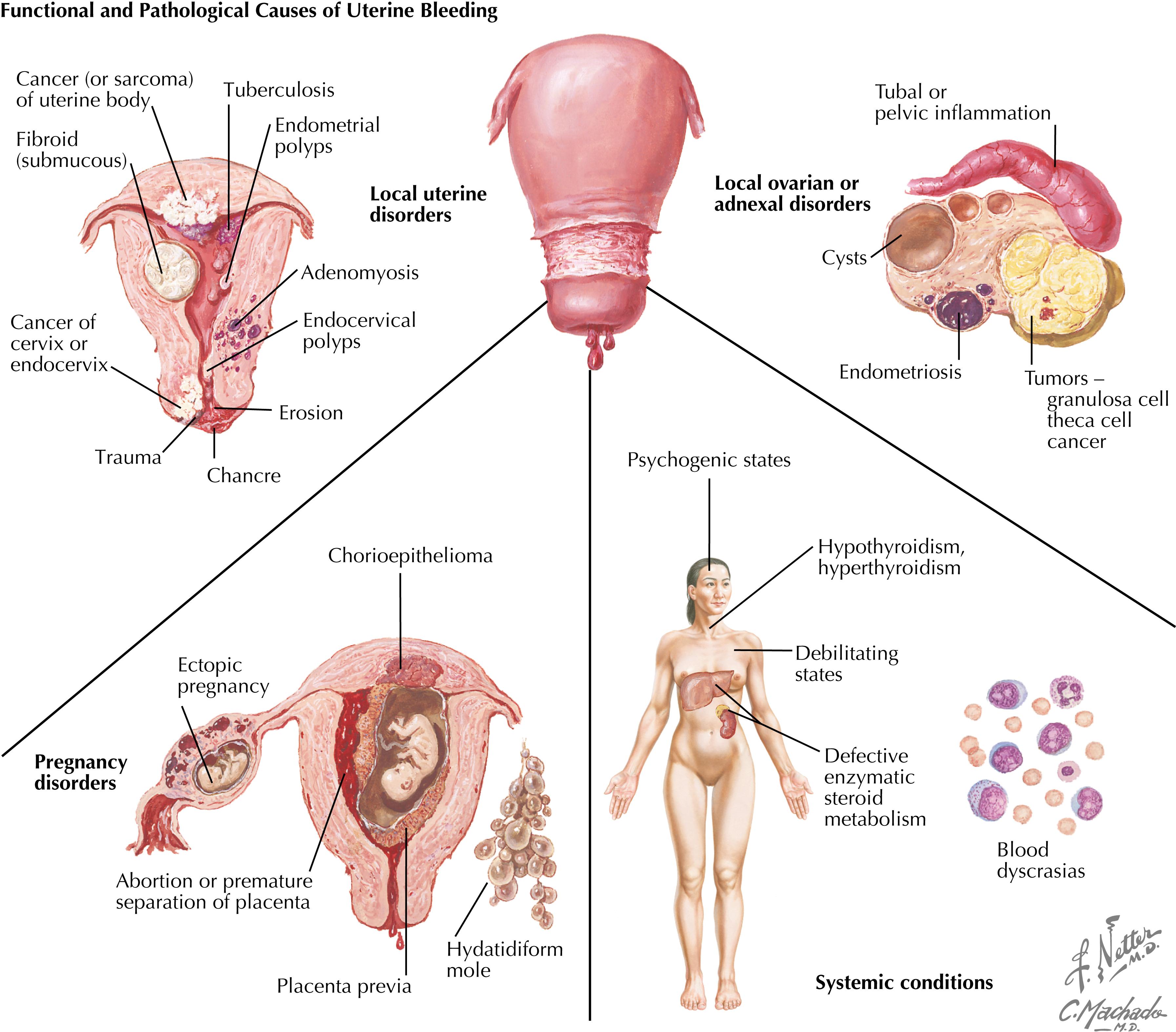Physical Address
304 North Cardinal St.
Dorchester Center, MA 02124
Description: Dysfunctional (abnormal) uterine bleeding is irregular or is intermenstrual bleeding with no clinically identifiable underlying cause. The bleeding may be abnormal in schedule, duration, or quantity.
Prevalence: 10%–35% of all gynecologic visits involve menstrual disturbances.
Predominant Age: Reproductive age; highest in adolescents and patients experiencing climacteric changes.
Genetics: No genetic pattern.
Causes: The causes of abnormal uterine bleeding have been summarized by the PALM-COEIN system ( Figure 132.1 ). Anovulatory patients—chemotherapy, chronic illness, climacteric changes, endometrial carcinoma, endometrial hyperplasia, hormonal contraception (oral, injectable, intrauterine), iatrogenic (anticoagulation, hormone replacement), idiopathic, medications (anticholinergic agents, monoamine oxidase inhibitors, morphine, phenothiazines, reserpine), nutritional disruption (anorexia, bulimia, excess physical activity), obesity, pituitary–hypothalamic–ovarian axis immaturity, pituitary tumor, polycystic ovary syndrome, stress, systemic disease (hepatic, renal, thyroid). Ovulatory patients—anatomic lesions (adenomyosis, cervical neoplasia, cervical polyps, endometrial carcinoma, endometrial polyps, leiomyomata, sarcoma), bleeding at ovulation, coagulopathies (natural or iatrogenic), endometritis, fallopian tube disease (infection, tumor), foreign body (intrauterine contraceptive device, pessary, tampon), idiopathic, ingested substances (estrogens, ginseng), leukemia, luteal phase dysfunction, pelvic inflammatory disease (including tuberculosis), pregnancy related (abortion, ectopic, hydatidiform mole, retained products of conception), repeated trauma, systemic disease (hepatic, renal, thyroid).


Risk Factors: Prolonged anovulation.
Intermenstrual bleeding (painless)
Irregular menstrual cycles (typically prolonged interval)
Pregnancy
Climacteric changes
Anovulation
Endometrial polyps
Uterine leiomyomata
Endometrial cancer
Endometriosis
Nonuterine sources of bleeding (eg, cervical, vaginal, vulvar, or perineal)
Iatrogenic causes (hormones, oral contraceptives)
Associated Conditions: Anovulation, infertility, endometrial cancer, endometrial polyps or carcinoma, uterine leiomyomata, obesity.
Become a Clinical Tree membership for Full access and enjoy Unlimited articles
If you are a member. Log in here